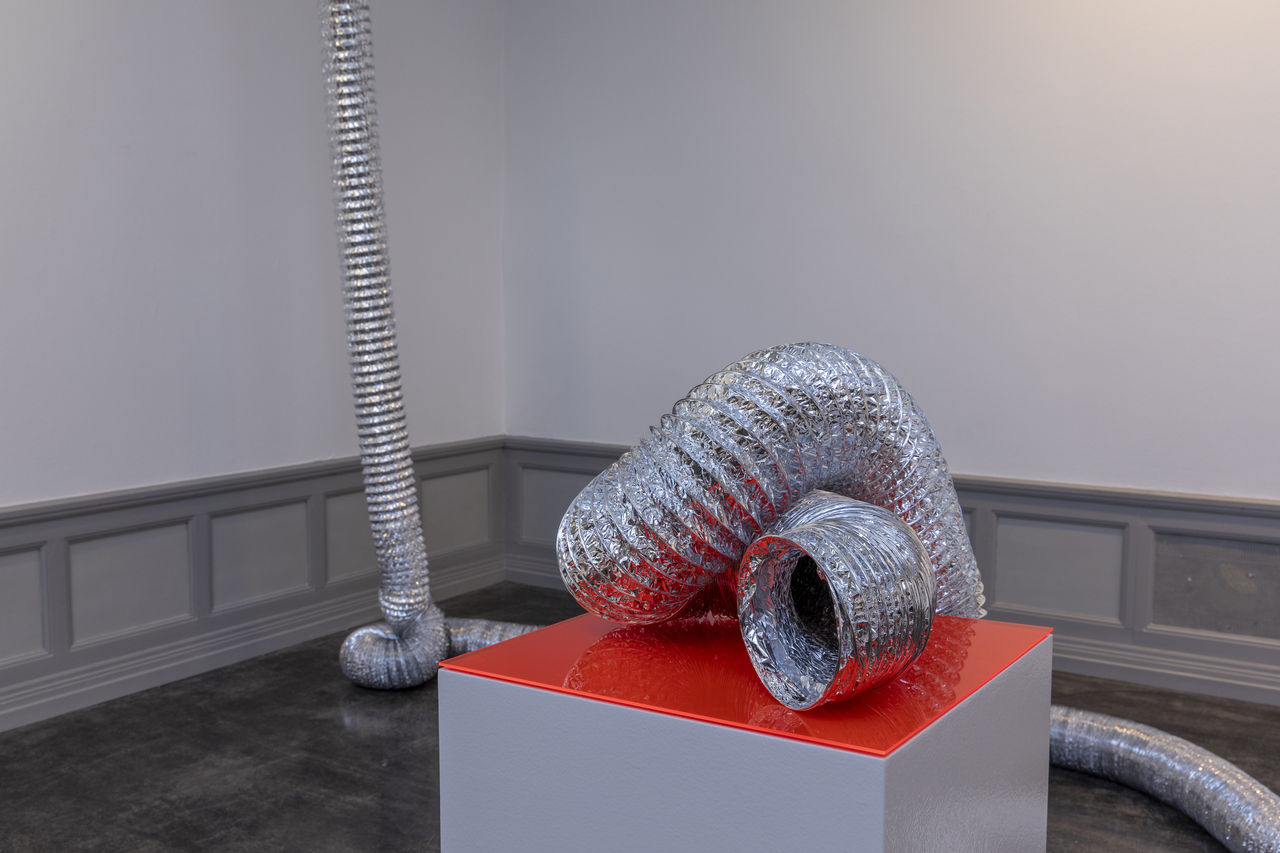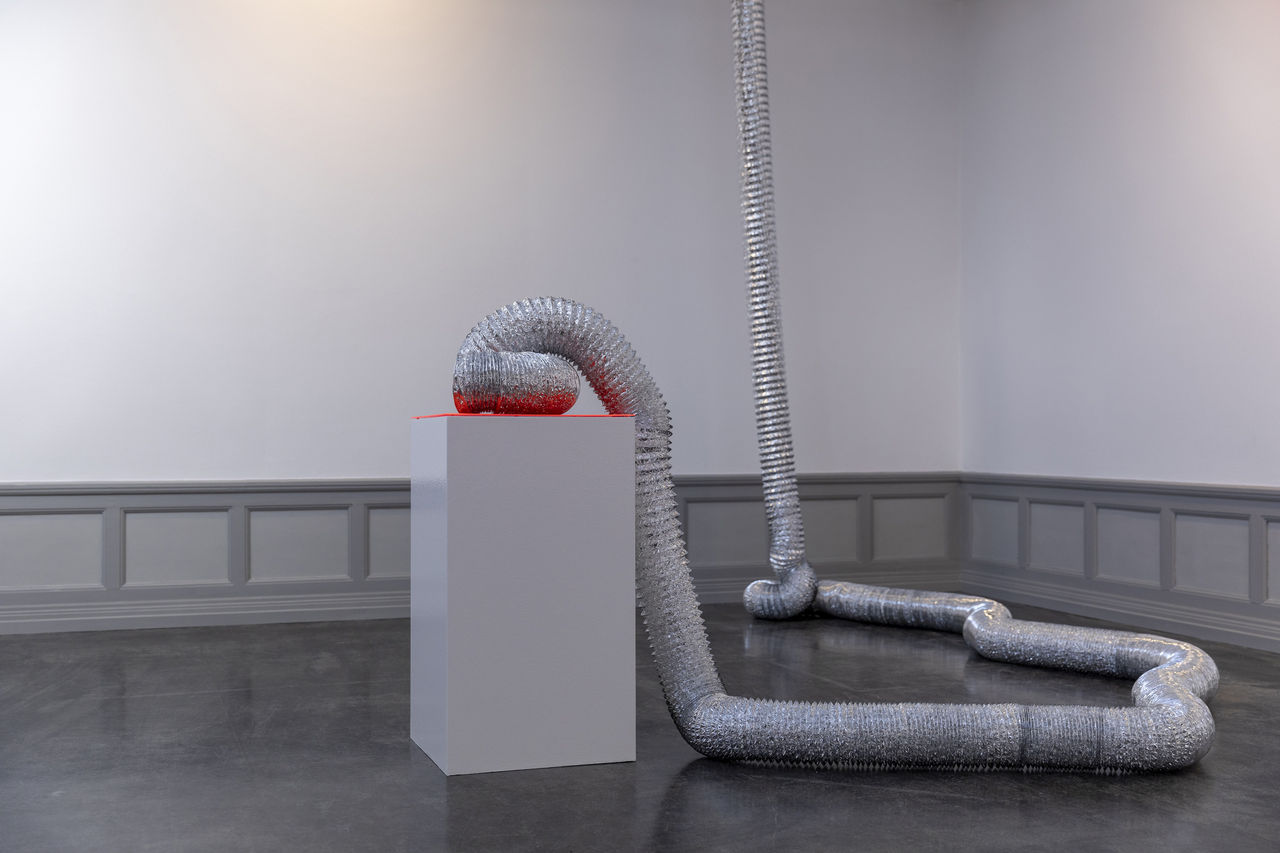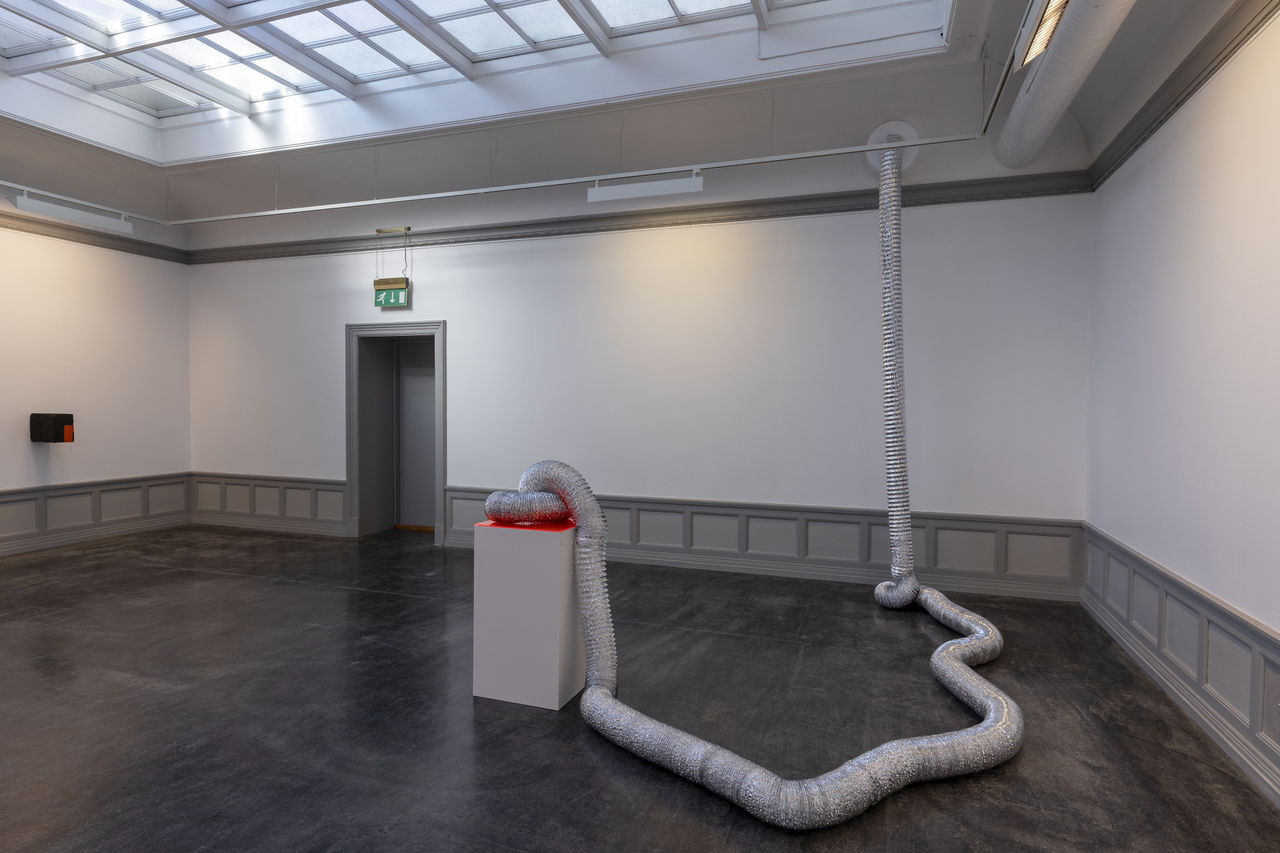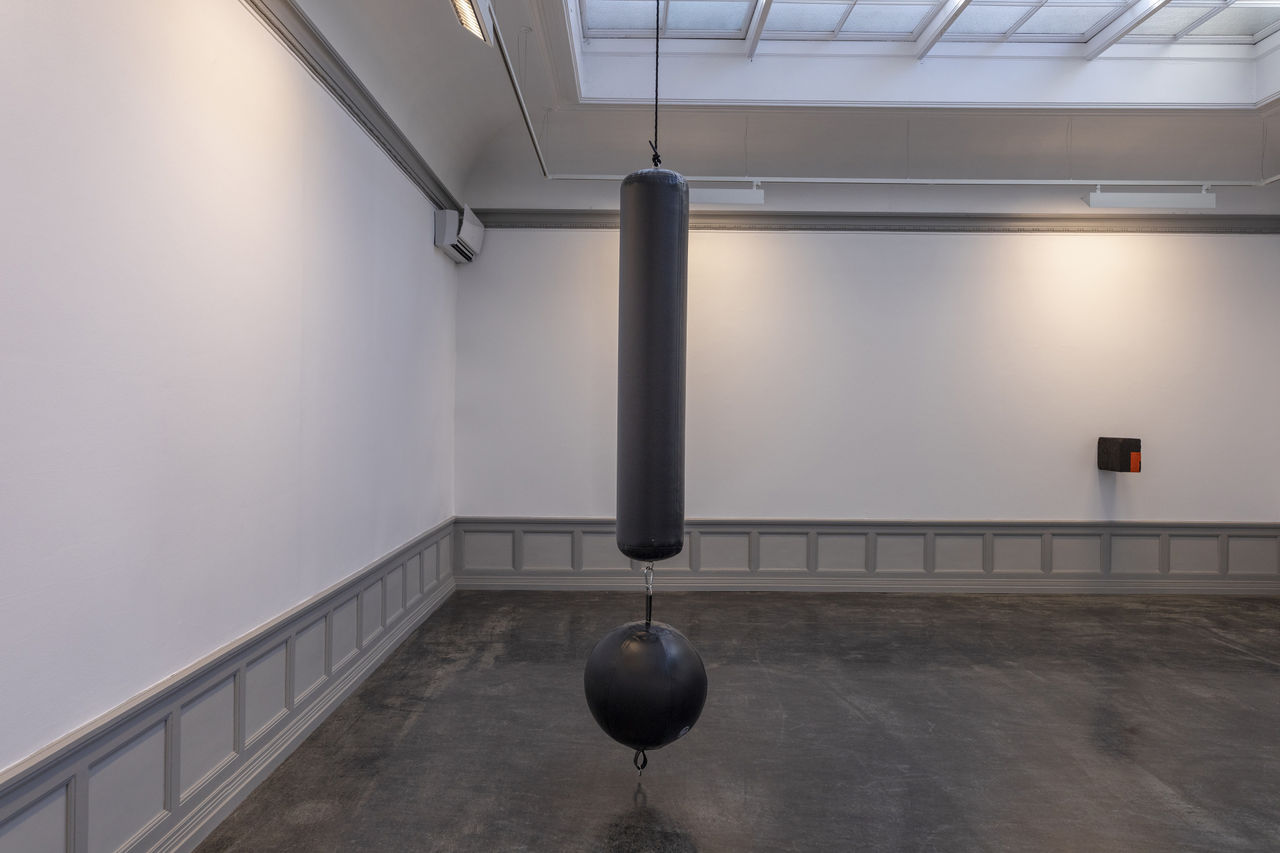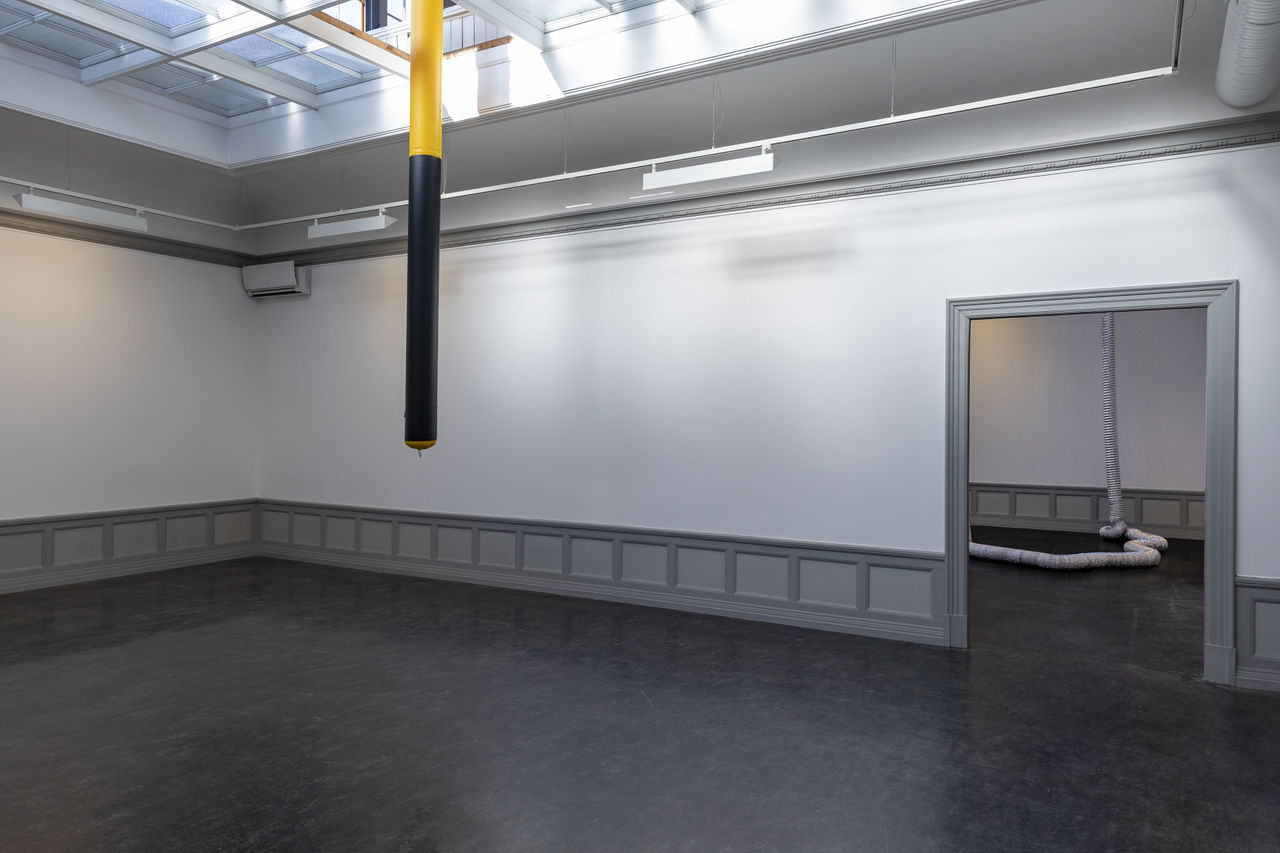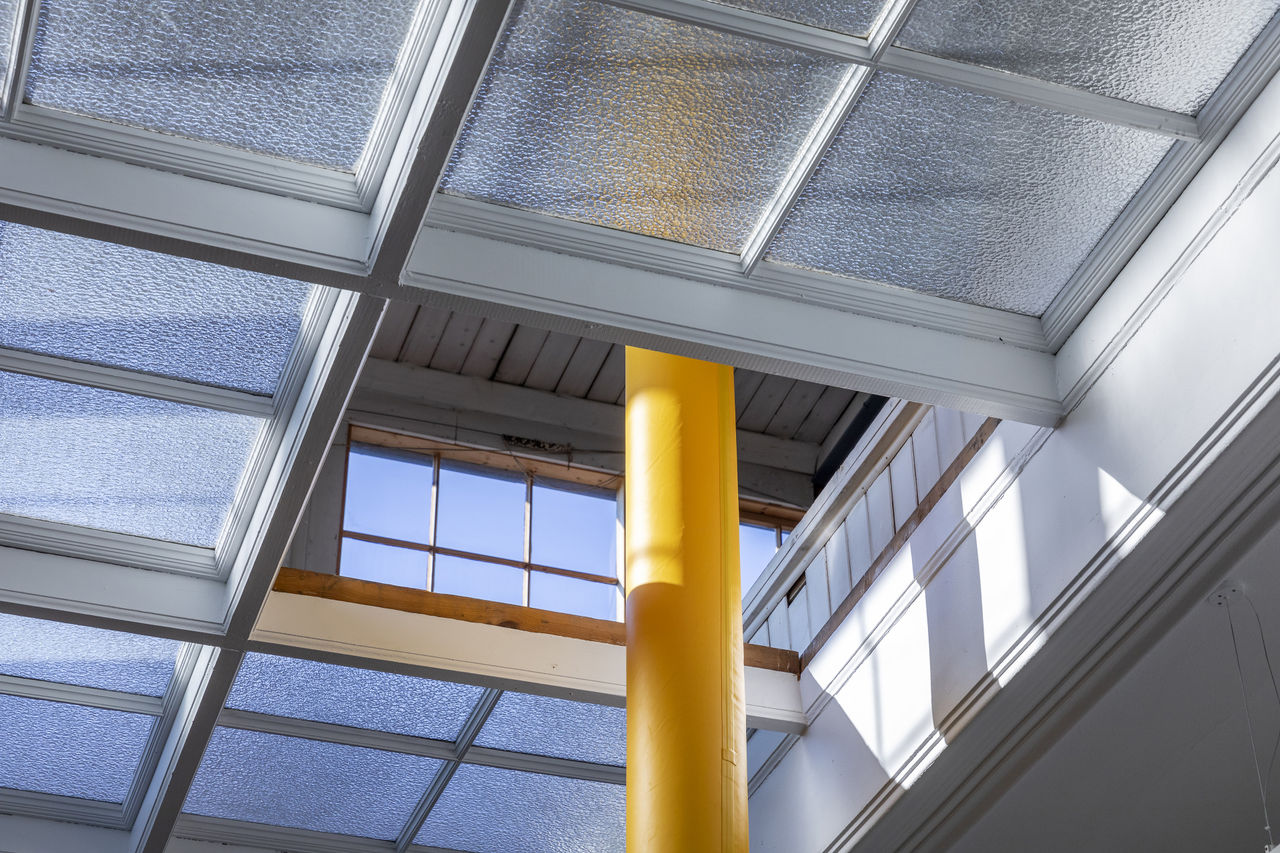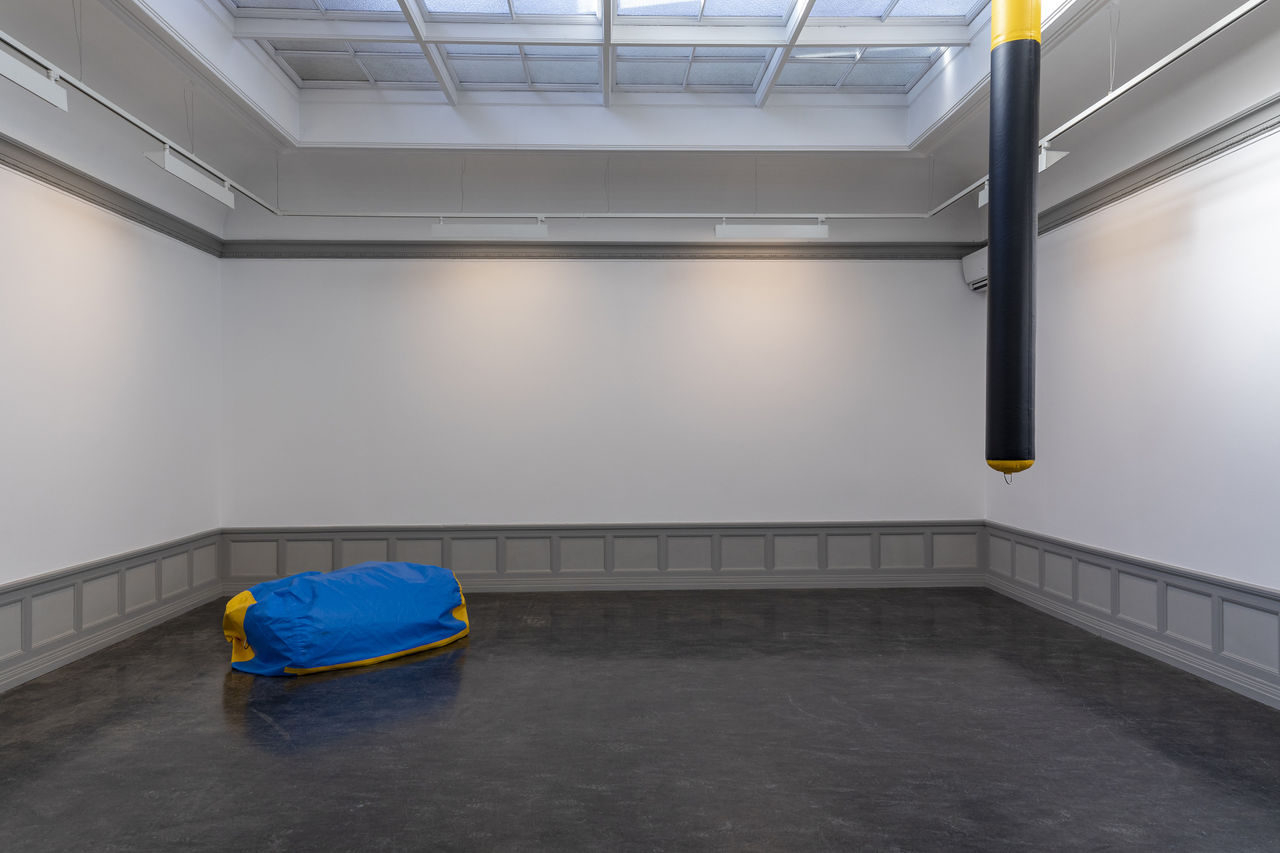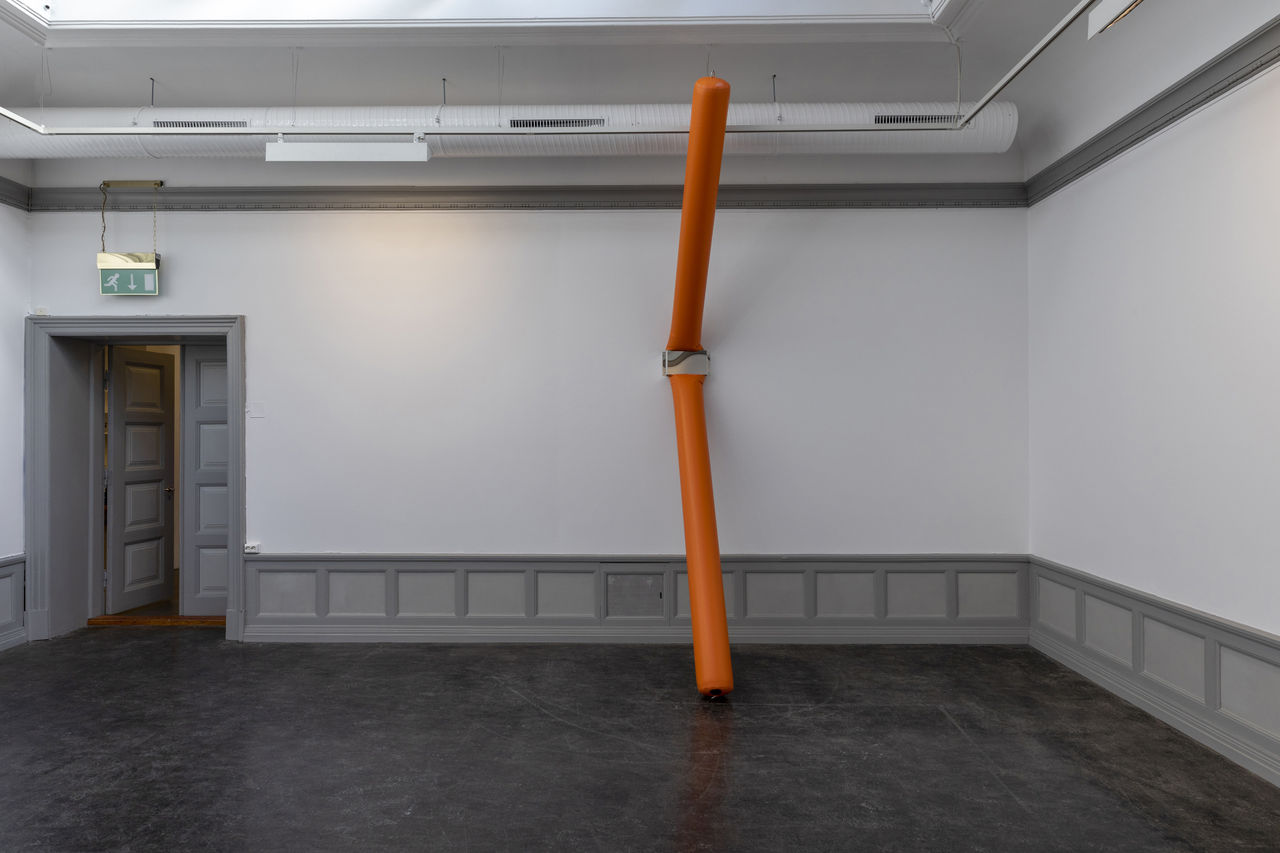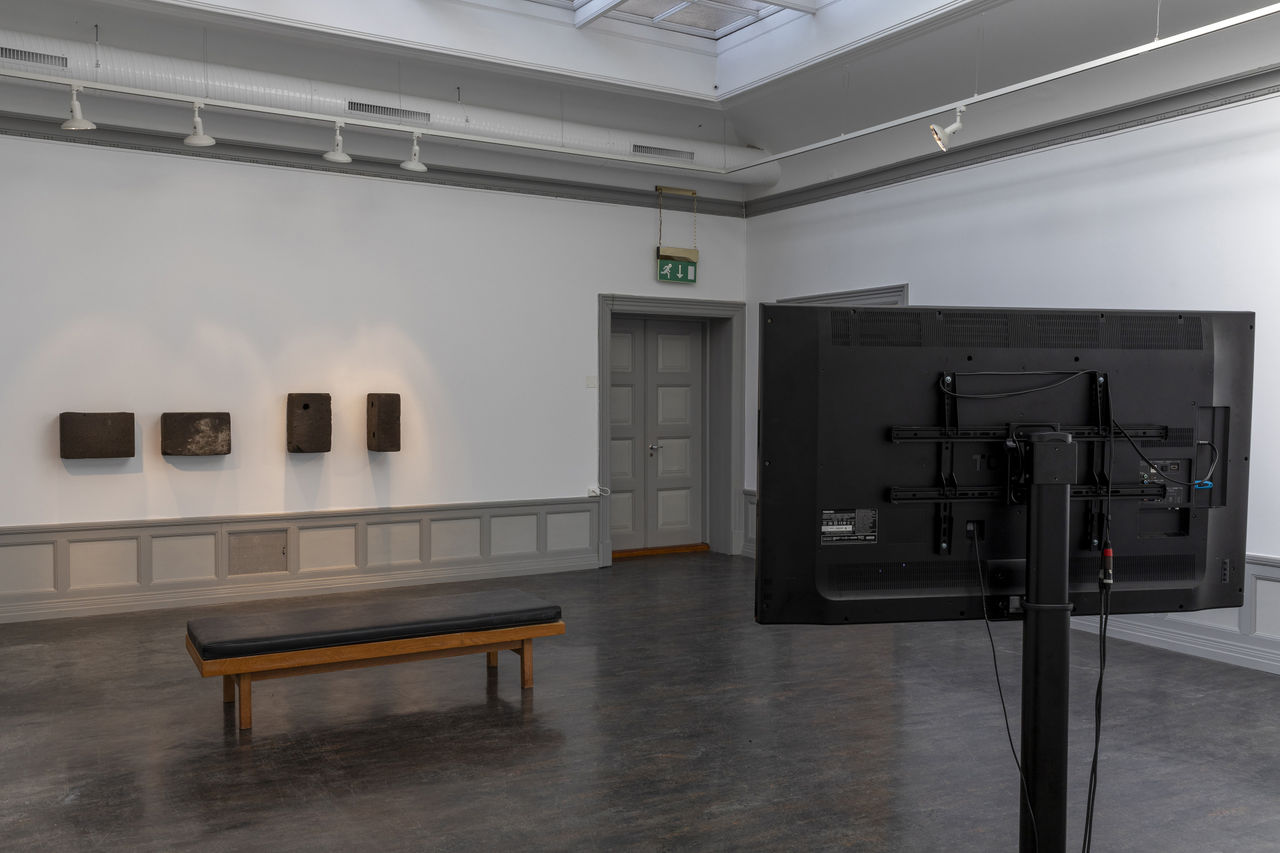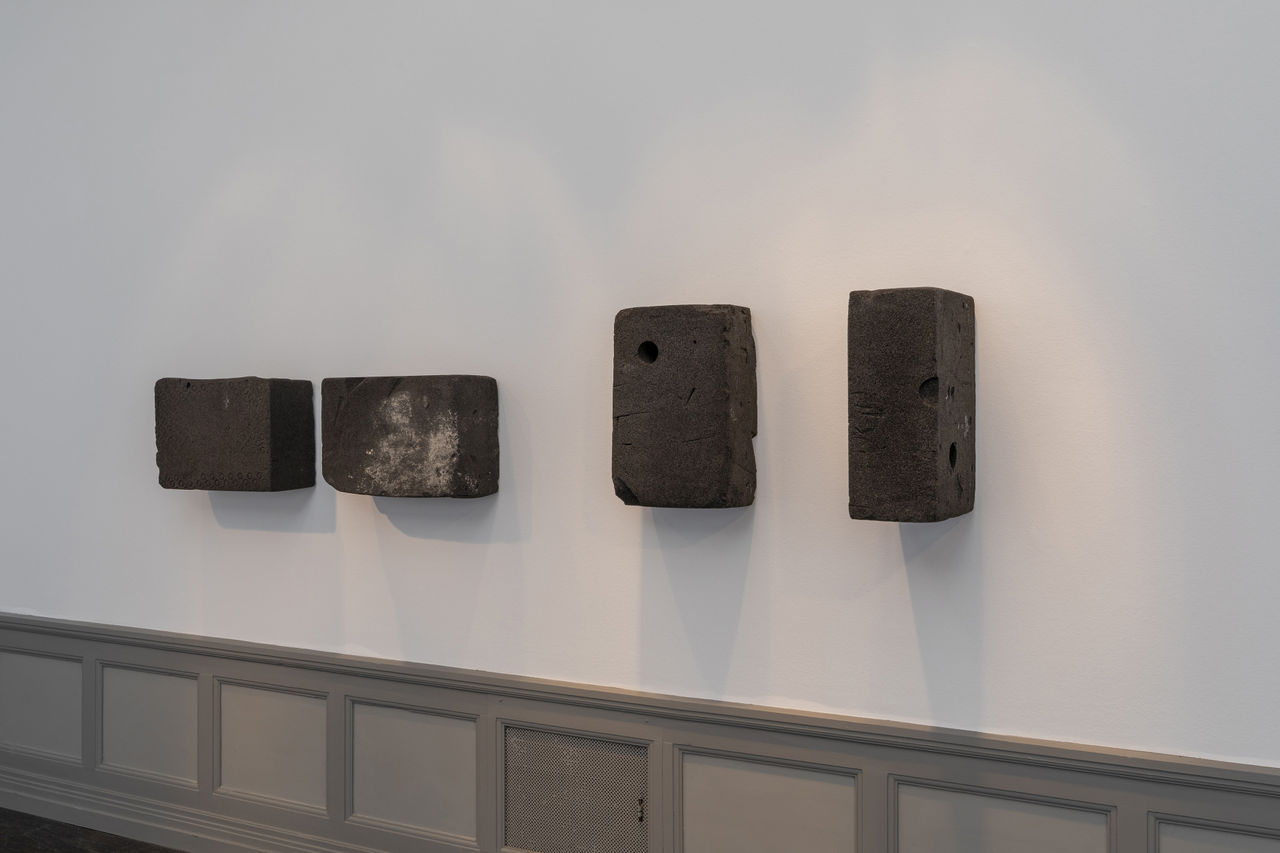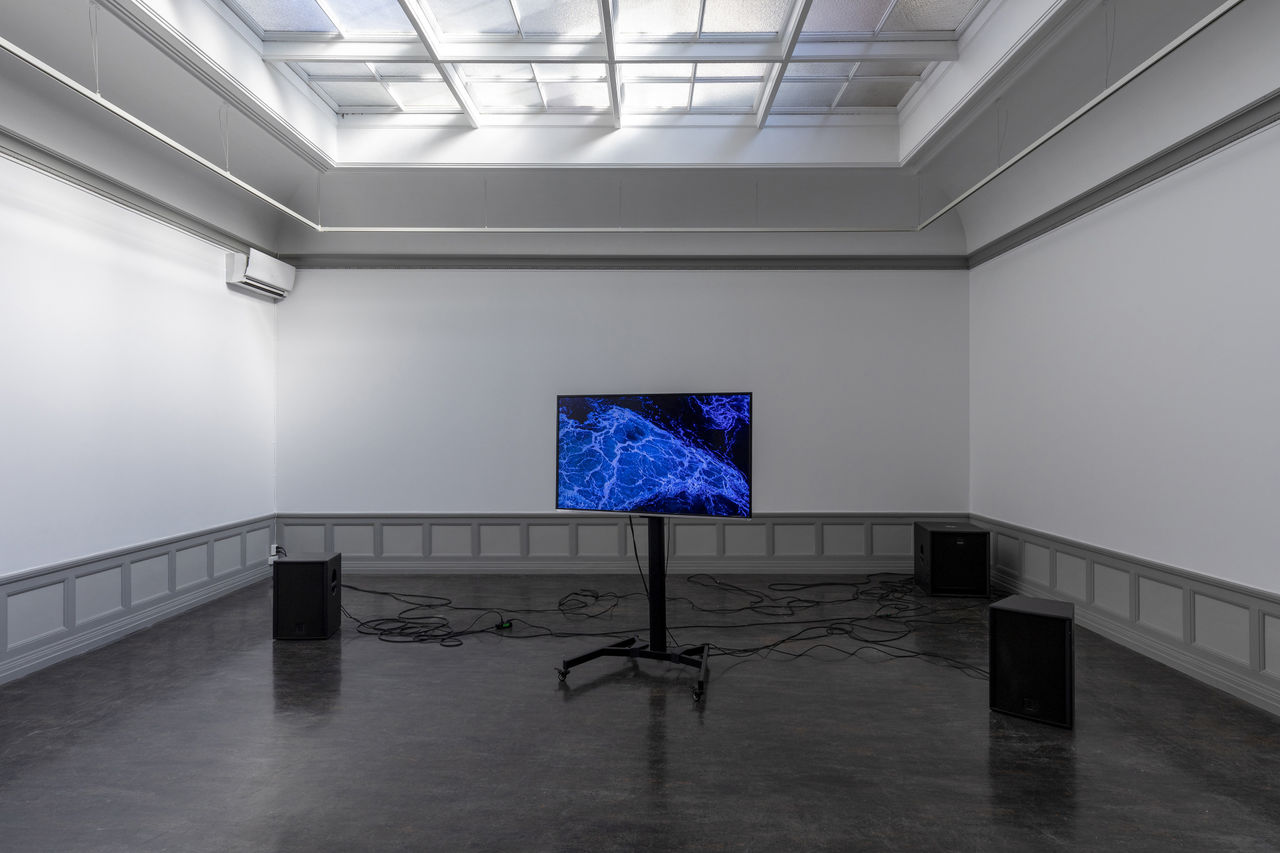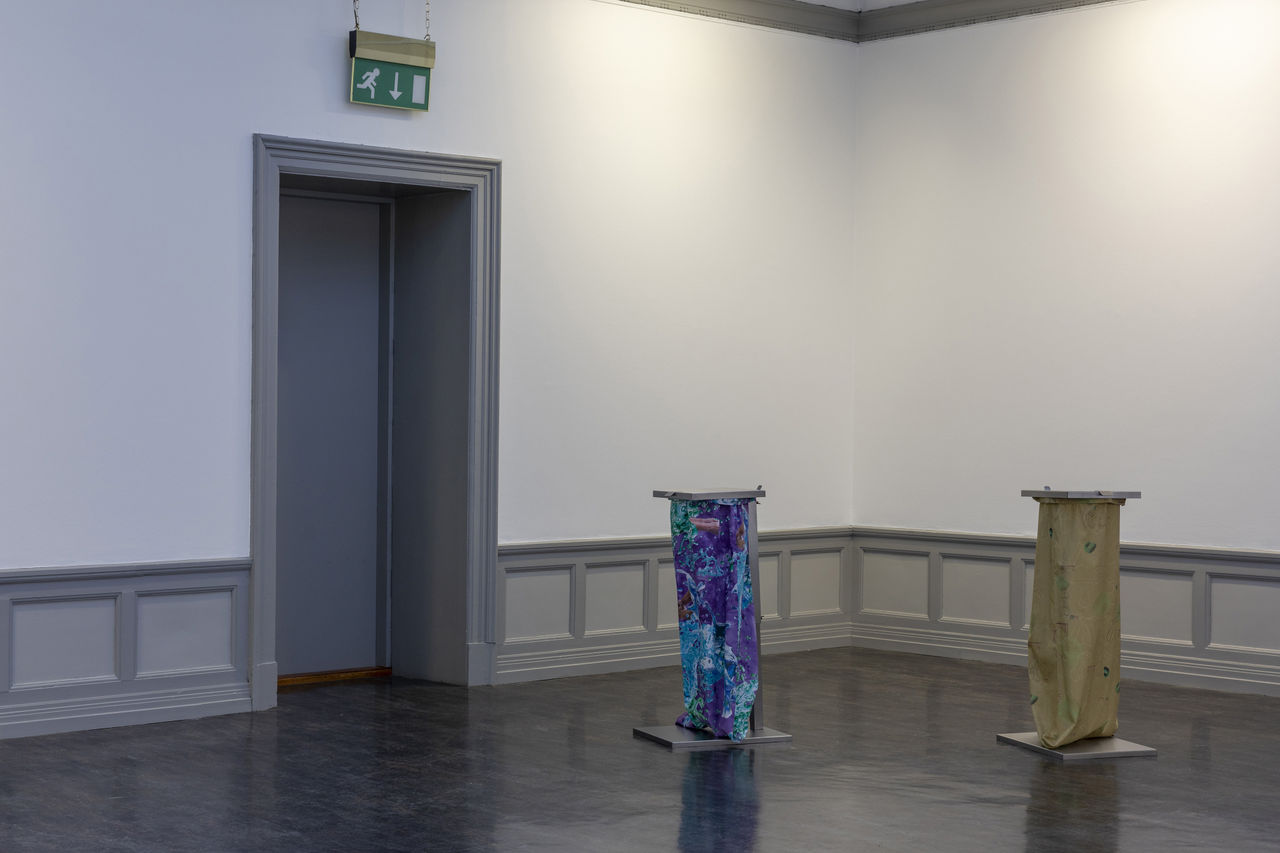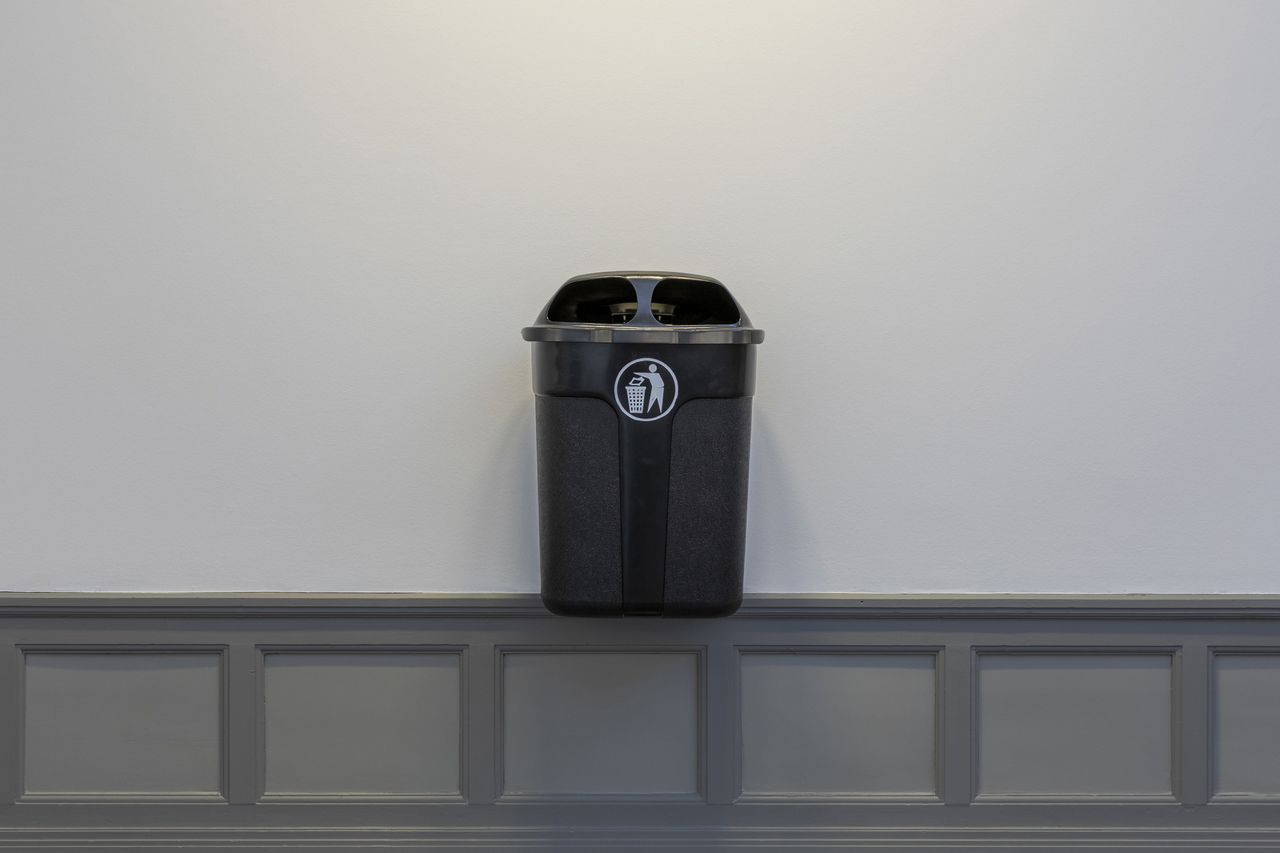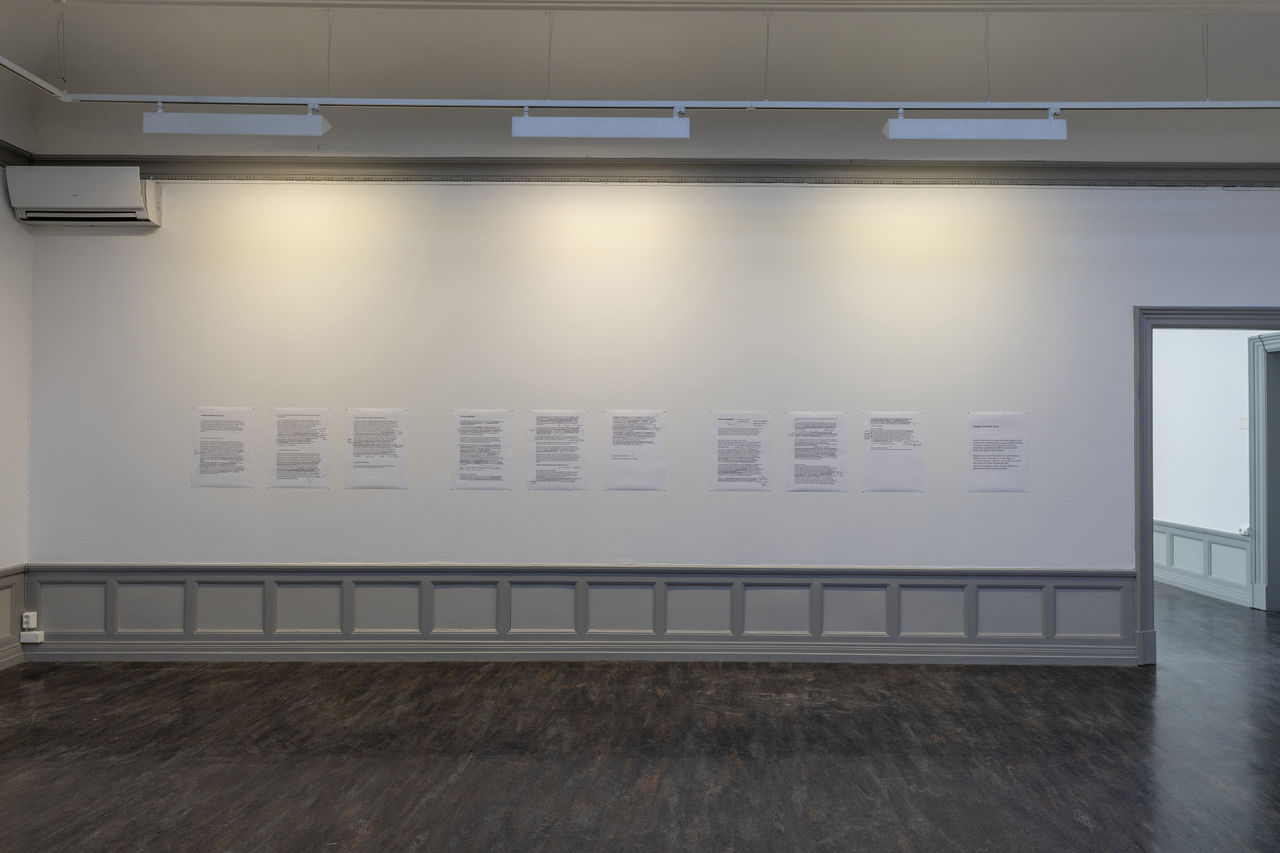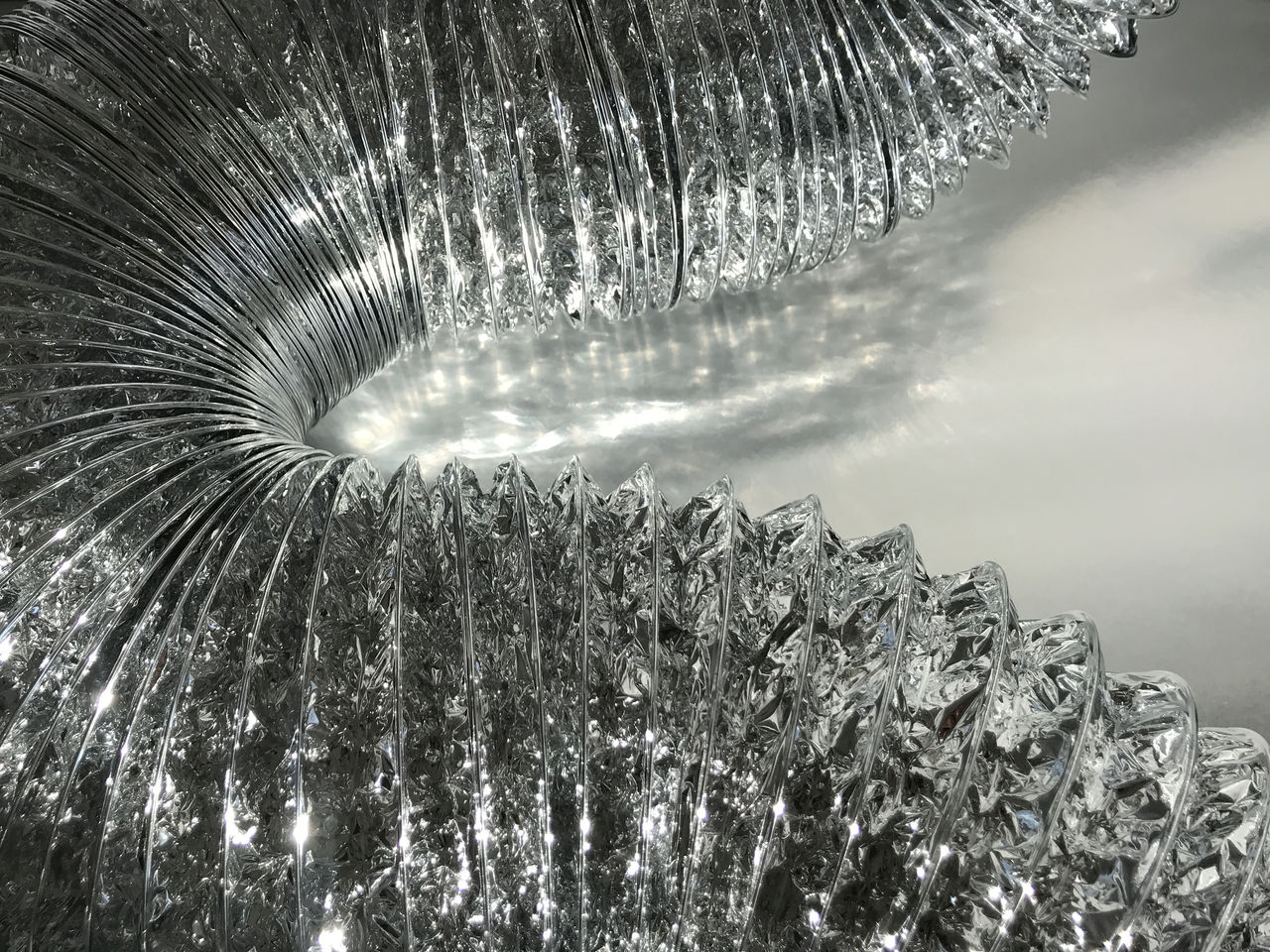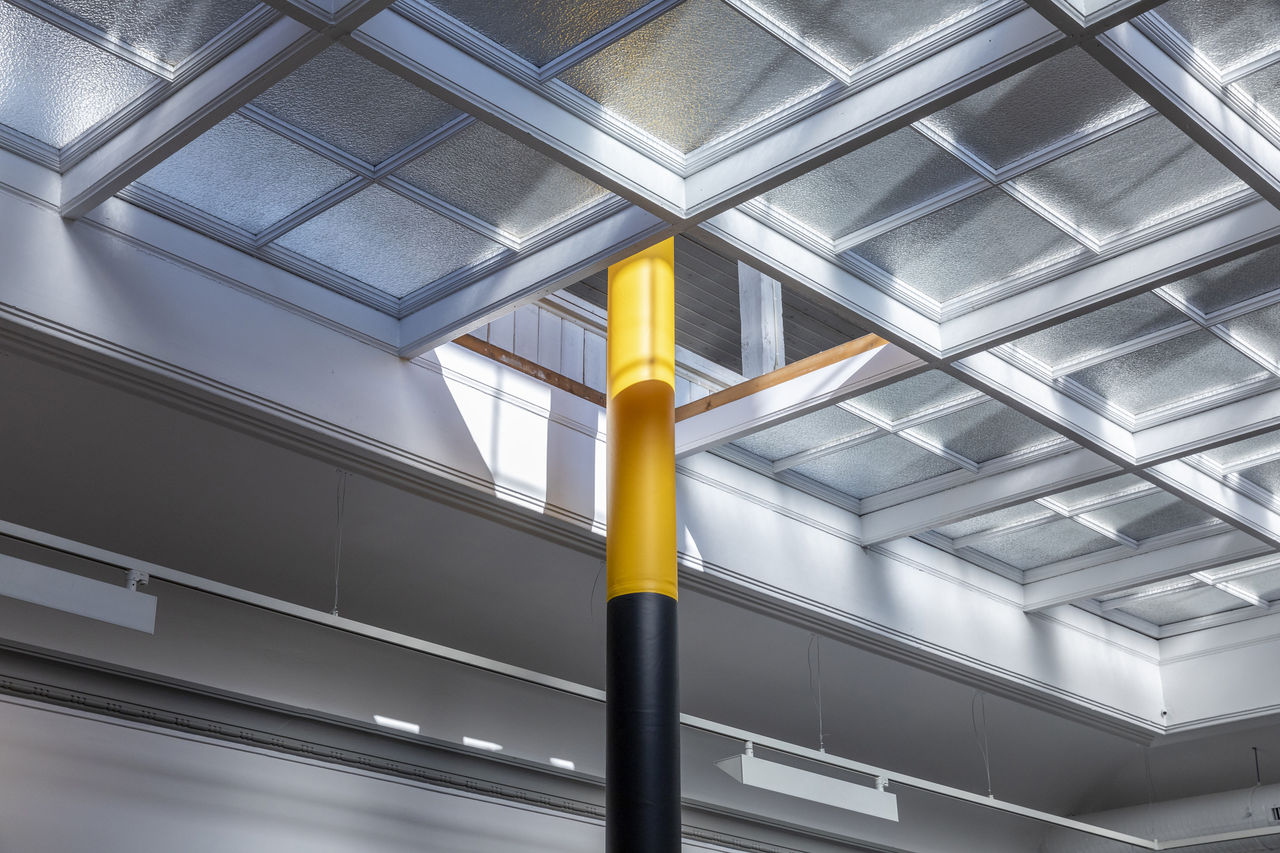
Kunsthall Stavanger presents an exhibition by Marte Eknæs as part of the exhibition series Kunsthall 2025. For Kunsthall 2025 artists are invited to produce new works in response to Kunsthall Stavanger’s building and its upcoming Centennial in 2025. In the years leading up to the celebrations, the building is undergoing multiple renovations, which the artists are also invited to react to. As the first artist taking part in the project, Eknæs initiates a dialogue with Kunsthall Stavanger's building and its history. The exhibition follows an earlier project by Eknæs, shown in the Fall of 2019 at Kunsthall Stavanger, where she presented the sculpture Air Body (2019) in the staircase of the building.
In the current exhibition, titled Air Conditions, Eknæs works with the building as a system, activating the exhibition as another component in the building’s structure. The title has several references: Air as a material and sculpture as an
Kunsthall Stavanger presents an exhibition by Marte Eknæs as part of the exhibition series Kunsthall 2025. For Kunsthall 2025 artists are invited to produce new works in response to Kunsthall Stavanger’s building and its upcoming Centennial in 2025. In the years leading up to the celebrations, the building is undergoing multiple renovations, which the artists are also invited to react to. As the first artist taking part in the project, Eknæs initiates a dialogue with Kunsthall Stavanger's building and its history. The exhibition follows an earlier project by Eknæs, shown in the Fall of 2019 at Kunsthall Stavanger, where she presented the sculpture Air Body (2019) in the staircase of the building.
In the current exhibition, titled Air Conditions, Eknæs works with the building as a system, activating the exhibition as another component in the building’s structure. The title has several references: Air as a material and sculpture as an unstable entity that takes different forms in response to changing situations. The plural form of the word ‘conditions’ in the exhibition title also emphasizes the varying and unequal states of this basic resource.
Taking as her starting point the newly installed ventilation system at the kunsthall, Eknæs has created the work Inhale (2020), which connects directly to the operational air circulation in the building. As an alien limb it extends the air duct into the gallery space, where it ends as a sculptural work on a plinth. Through the duct, Inhale is in direct connection with the outside, and the constant flow of air is one of its material components.
Throughout Air Conditions, Eknæs works with ideas of system-thinking, more precisely pointing to how the artworks are parts in a greater system. According to Eknæs, the roles they hold can be manifold: activator, connector, occupant, vessel, communicator, body and material. The strategy of observing and learning from an industrial language and forms that result from utility processes, is a continuous thread through the exhibition and in Eknæs’ practice. This can be exemplified in the series of Inflatables installed throughout the gallery spaces. Custom-made in PVC by a boat fender manufacturer, they are inserted into the gallery through the skylight, or are in a state of deflation or resistance — displaying air as a material in itself.
Originally intended as a site-specific exhibition, Eknæs has employed the term situation-specific in response to the constraints laid on the installation of the show. Due to the pandemic, the mounting of the artworks has happened via digital platforms, with Eknæs in Berlin and the install team in Stavanger. Situation-specificity is here used as a response, not just to the physical site, but also to the conditions that are shaping the making and exhibiting of the artwork.
Following the idea of situation-specificity, Eknæs points to the climate emergency and the role oil extraction plays in the deterioration of the environment. Here, Norway and the city of Stavanger — often referred to as the oil capital of Norway — play central roles. As this accelerates, Eknæs considers the role we all play in this situation, and particularly the role of artists and art institutions. In a direct response and an act of giving up exhibition space, Eknæs dedicates parts of one of the galleries to information concerning a lawsuit brought against the Norwegian Government for their granting of new licenses to drill for oil in the Barents Sea. The case, brought forward by a group of environmental organizations, will be heard in the Norwegian Supreme Court on 4–12 November, and information will be added to the exhibition as it progresses.
This also provides a specific context to other works in the show, particularly the video work aƒ12 Flares, Currents (2020), which is a collaboration between Eknæs, filmmaker Michael Amstad and musician Powell. Partly shot in the Stavanger area, it combines the vastness of the seascape and the texture of its surface with industrial spill control processes of chemical socks absorbing fluids. The sounds are elongated and hypnotic, giving the appearance of liquids coagulating and time retracting.
In the same gallery, Eknæs presents a series of wall-hung sculptures from the series Insular (2017–ongoing), made from insulation material foam glass, which is often used to insulate rooms for art storage. Normally this material remains hidden inside walls, but here Eknæs brings it into the gallery, emphasizing the pendulum effect between the artwork and the system it sits within.
Another utilitarian object that often features in Eknæs’ work is the trash can. Here, her interest is based in how these objects cater to the most basic everyday activity, the disposal of waste, thus drawing a somewhat skewed connection between art and trash. Although, existing at opposite ends of the value scale, these categories often share the common categorization of not being “useful”.
For this exhibition, Eknæs mixes the materiality of sculptures with the materiality of the building itself. In different ways the works resist or adapt to the structural layers of the building, and ultimately pushes through the architecture to show it as a breathing entity — temporarily hosting the conditions created by Eknæs’ work.
The exhibition has received generous support from Arts Council Norway.
b. 1978
Marte Eknæs lives and works in Hamar, Norway and Berlin, Germany. Her practice is largely context based, and she often works collaboratively and cross-disciplinary. Selected exhibitions by Eknæs include Kunsthall Oslo; Between Bridges, London; Bonner Kunstverein, Bonn; Kunstnerforbundet, Oslo; Kunstnernes Hus, Oslo; What Pipeline; Detroit; and Trondheim Kunstmuseum. Her next exhibition ! opens at Efremidis Gallery, Berlin in November this year.
Addressing the continuously changing context of her work, Eknæs launched the transdisciplinary web platform formsofflexibility.space (FOF) via Kunsthall Stavanger's website in 2019, and continues to develop it with her own and others’ contributions.
Together with Swiss filmmaker Michael Amstad, she has produced several video projects, including People Mover (2017) which was screened at UKS, Oslo; Grüner Salon/Volksbühne, Berlin and The Kitchen, New York. They also have an ongoing audio visual collaboration with the musician Powell, which is published on the platform afolder.studio.

